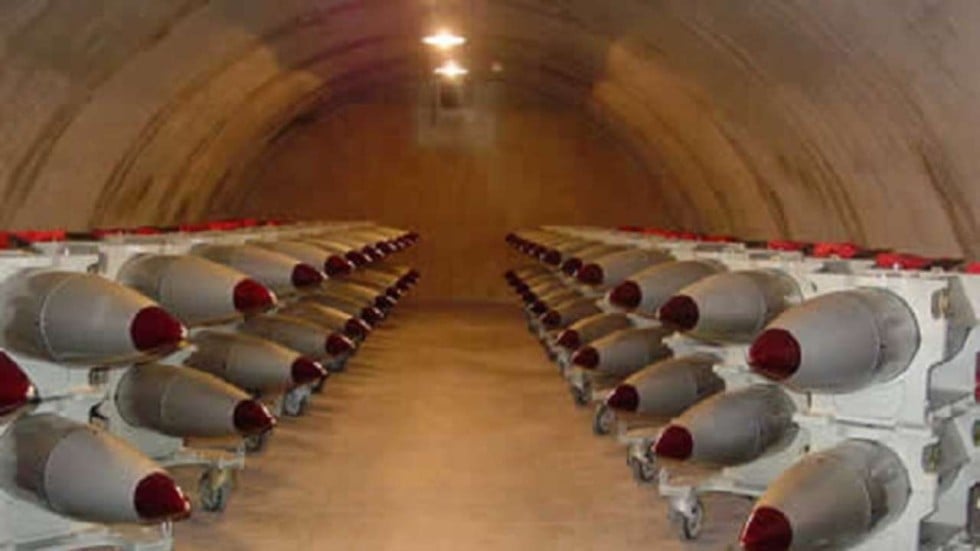
A little more than 100 miles from the territory held by Islamic State, there is a little piece of Americana. It has an eight-lane swimming pool, a baseball diamond and housing tracts built on carefully manicured cul-de-sacs.
The Incirlik Air Force Base in Turkey has some other American assets: several dozen B61 thermonuclear warheads.
Turkey’s coup crackdown strains ties with the US and Europe
The base has been a linchpin in Nato’s southern flank for more than half a century, the staging ground for US anti-terrorism missions and the fight against Islamic State.
But the failed military coup against Turkish President Recep Tayyip Erdogan has increased long-standing concerns about the military usefulness and security of the Incirlik armoury, America’s largest foreign stockpile of nuclear weapons.
Security remains at the highest level. Electrical power was restored Friday after a weeklong blackout that strained living conditions at the base. The 3,000 US service personnel stationed there have been ordered to remain inside the gates. Hundreds of dependents were sent home months ago because of fears of a terrorist attack.
The base was an operational centre of the attempted coup. Its commander and his subordinates were arrested on suspicion of trying to overthrow the Turkish government, leaving junior officers in control.
The developments have shocked US military experts who say they demonstrate a worrying level of instability in Turkey’s military command close to the B61s.
Defence officials have never acknowledged the existence of these weapons on the base and refused at news briefings after the coup attempt to answer questions about them.
Lieutenant Colonel Christopher Karns, an Air Force spokesman for US Central Command in Qatar, said the electricity cutoff had forced water rationing and a slight reduction in bombing missions against Islamic State, but operations were returning to normal.
The weapons are in underground vaults in a mile-long security zone at the base, protected by an Air Force guard unit with attack dogs. The nearly 12-foot-long weapons have devices that are supposed to prevent unauthorised detonation, but experts are divided on the effectiveness of those controls.
Unlike the strategic weapons that the US deploys in missile silos, submarines and intercontinental bombers, the B61s at Incirlik are tactical weapons that can be deployed at low altitude in the battlefield.
Any decision either about keeping or withdrawing the weapons in Turkey is fraught with political and military risks.
“Turkey was much more stable two years ago and ISIS did not stand where it is today,” said Philip Coyle, a former national security adviser for the Obama administration and a top Defence Department executive during the Clinton administration.
“It’s all the more reason to pull the weapons out of Turkey.”
Wesley Clark, a retired four-star general and Nato’s supreme allied commander in the late 1990s, said he would not rule out a closer examination of Nato’s placement and policies on nuclear weapons, noting that he has “deep concerns” about Turkey’s situation. But he said that a wholesale withdrawal of the weapons is not necessary.
“They are very secure,” Clark said. They could be extracted quickly if the situation deteriorated and the electronic locks on the bombs would render them useless, he said. “If you captured them, it would be like having a block of concrete.”
The B61s are broadly considered more a political symbol of US commitment to the Nato alliance than a military asset. The US does not have aircraft at Incirlik qualified to deliver the weapons.
The B61s are the last US tactical nuclear weapons based in Europe, originally placed there as a deterrent to a ground invasion by the Soviet Union. The bombs, an early 1960s design and the nation’s oldest model, have variable explosive power, randing from the equivalent of 300 tonnes of TNT to 170,000 tonnes.
For the weapons to be used, the US would have to fly a squadron of aircraft into Incirlik to load the bombs, all of which would be observed by Russia and possibly make the base a target of a first strike.
For that reason, the B-61 bombs will almost certainly never be used, said Aaron Stein, a Turkey analyst at the Atlantic Council in Washington.
“The B61s inside Turkey are entirely symbolic, at this point,” he said. “But there’s no off ramp of getting the weapons out of there.”
In some ways, the US deployment of the weapons has become a hostage to history. It is unclear who has the authority to order their removal, though the final decision probably would go to the president. And how an emergency withdrawal would be handled is highly classified.
A sudden withdrawal of the weapons could have broad political ramifications forNato,said Stephen Rademaker, assistant secretary of State for international security and nonproliferation during the George H.W. Bush administration.
“It would be a dramatic step,” Rademaker said, noting that a pullback based on concerns that Turkey is not stable enough for nuclear weapons could prompt a question about whether the nation is trustworthy enough to be a Nato ally.
Turkey has the largest military force in Nato after the US and has played a pivotal role in US actions in the region dating back to a Lebanon deployment in the 1950s.
The US maintains about 180 B61s in five European nations, while Russia has a tenfold advantage in tactical nuclear weapons.
US nuclear weapons experts say the historic relationship with Turkey should not preclude a change in policy, based on rising security risks in the region.
“The weapons should be pulled back,” said Hans Kristensen, a nuclear weapons expert at the Federation of American Scientists. “They have been in excess of what is needed in Europe for the past two decades. And now we have this new situation. This is the US nuclear base closest to a war zone. The country has a deeply fractured political and military system.”

